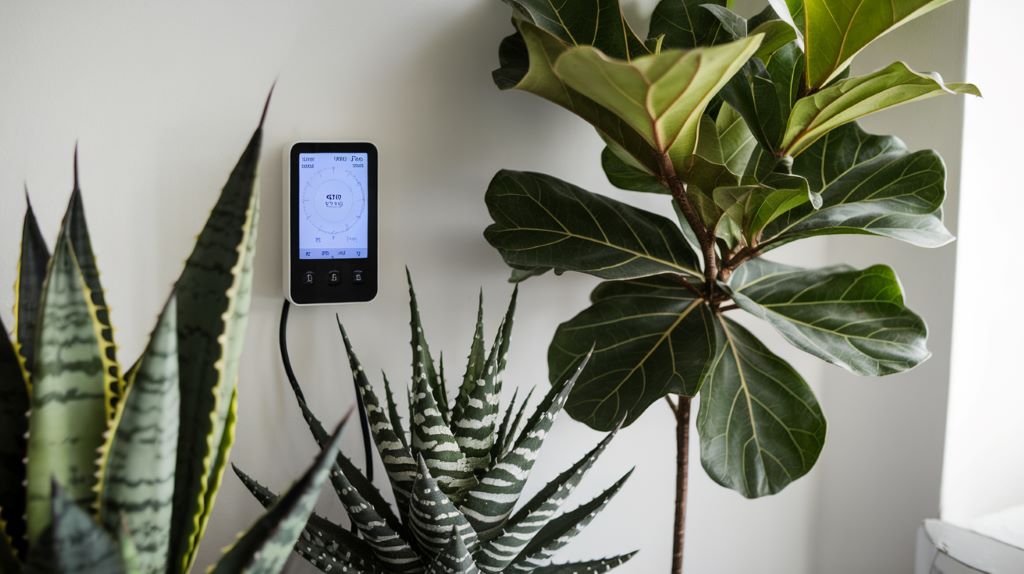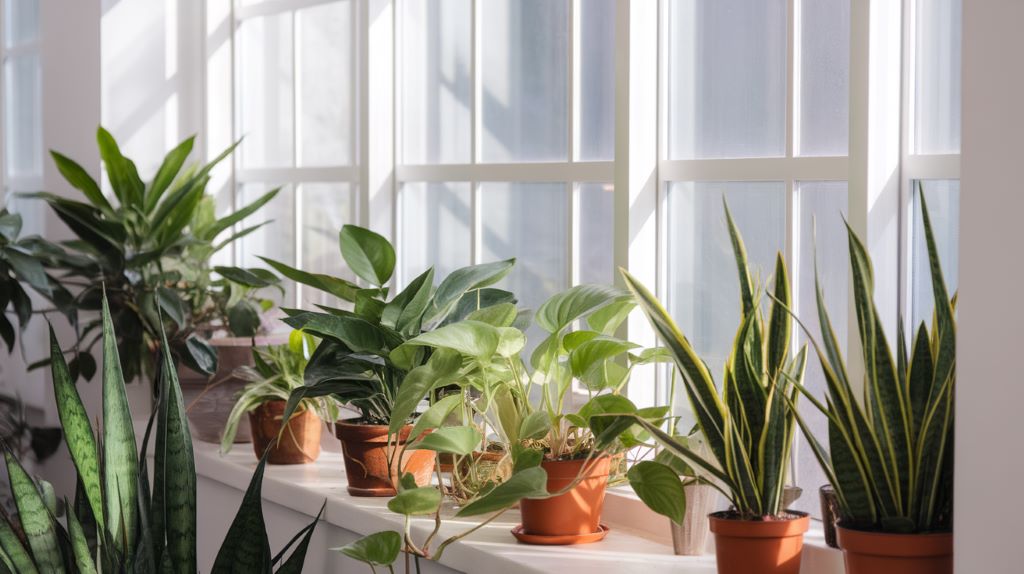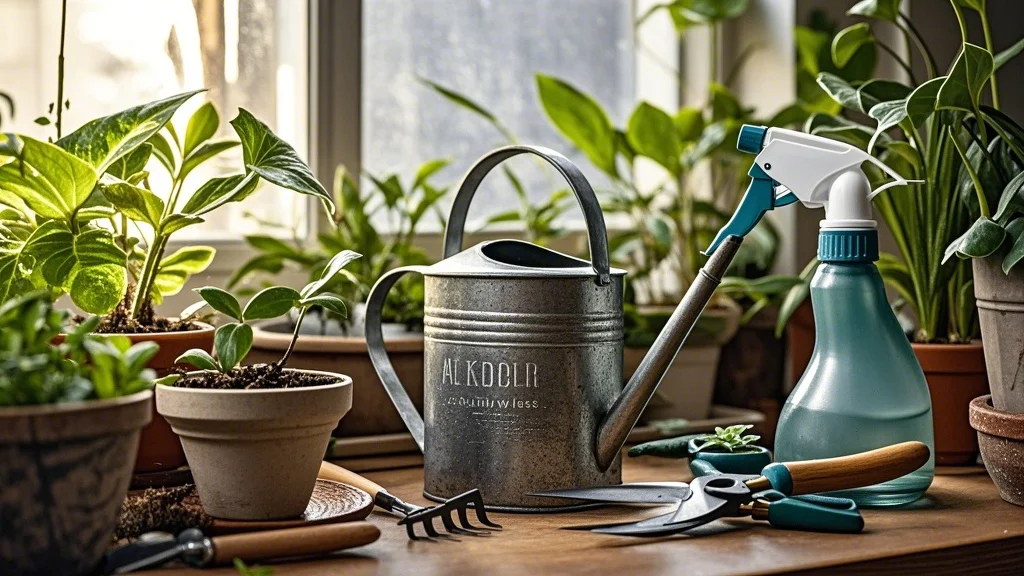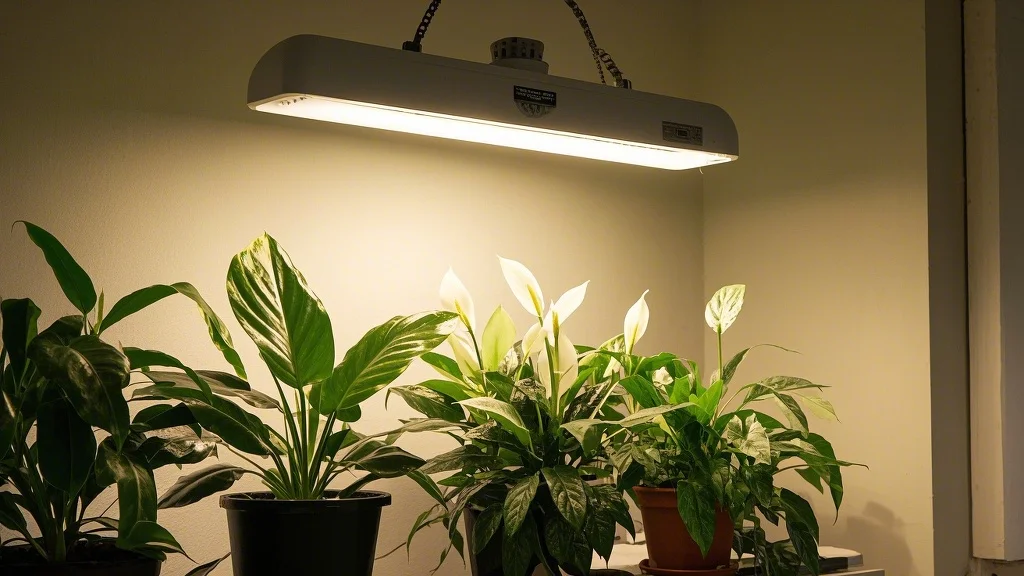Understanding the light levels in your home is crucial for successful indoor gardening. Different plants have varying light requirements, and accurately measuring the available light helps ensure your green companions thrive in their environment. This guide will explore various tools and techniques for measuring light levels, empowering you to create the perfect conditions for your indoor garden.
Contents
Why Measure Light Levels?
Before diving into the tools and techniques, it’s essential to understand why measuring light levels is so important:
- Plant health: Proper light levels are crucial for photosynthesis, growth, and overall plant health.
- Optimal placement: Knowing light levels helps you position plants in ideal locations within your home.
- Troubleshooting: If a plant is struggling, light level data can help identify if insufficient light is the culprit.
- Seasonal adjustments: Light levels change throughout the year, and measurements allow you to adapt accordingly.
Tools for Measuring Light
1. Light Meters
Light meters, also known as lux meters or illuminance meters, are professional-grade tools designed specifically for measuring light intensity.
Pros:
- High accuracy
- Wide measurement range
- Often include additional features like data logging
Cons:
- Can be expensive
- May require some technical knowledge to interpret results
Recommended models:
- Dr. Meter LX1330B Digital Illuminance Light Meter
- Extech LT300 Light Meter
- URCERI Light Meter
2. Smartphone Apps
Several smartphone apps can turn your device into a light meter using the built-in camera or light sensor.
Pros:
- Convenient and readily available
- Often free or low-cost
- User-friendly interfaces
Cons:
- Less accurate than dedicated light meters
- Results may vary between different phone models
Recommended apps:
- Lux Light Meter (Android)
- Light Meter (iOS)
- Photone (iOS and Android)
3. PAR Meters
Photosynthetically Active Radiation (PAR) meters measure the light wavelengths most relevant to plant growth.
Pros:
- Provides data specific to plant needs
- Highly accurate for horticultural applications
Cons:
- More expensive than standard light meters
- May be overkill for casual indoor gardeners
Recommended models:
- Apogee MQ-500 Full-Spectrum Quantum Meter
- Hydrofarm LGBQM Quantum PAR Meter
4. DIY Light Meters
For the technically inclined, it’s possible to build your own light meter using components like Arduino or Raspberry Pi.
Pros:
- Cost-effective
- Customizable to your specific needs
- Educational project
Cons:
- Requires technical skills and time investment
- May not be as accurate as commercial options
Techniques for Measuring Light Levels
1. Spot Measurements
Take individual readings at various points in your home to create a light map.
Steps:
- Choose a consistent time of day for measurements (e.g., noon).
- Hold the light meter or smartphone at plant level.
- Face the sensor towards the light source.
- Take multiple readings in each area and calculate the average.
- Record results for future reference.
2. Daily Light Integral (DLI) Measurements
DLI represents the total amount of light a plant receives over 24 hours.
Steps:
- Use a light meter with data logging capabilities or take manual readings every hour during daylight.
- Calculate the average light level for the day.
- Multiply the average by the number of daylight hours.
- Convert the result to mol/m²/day (if your meter doesn’t do this automatically).
3. Shadow Test
A simple, tool-free method to estimate light levels.
Steps:
- Hold your hand about 12 inches above a white sheet of paper.
- Observe the shadow cast:
- Sharp, dark shadow: Bright light
- Soft, but still visible shadow: Medium light
- Barely visible or no shadow: Low light
4. Time-Lapse Photography
Use a camera or smartphone to capture light changes throughout the day.
Steps:
- Set up a camera facing the area you want to measure.
- Configure it to take photos at regular intervals (e.g., every 15 minutes).
- Run the time-lapse for at least one full day.
- Review the footage to observe light patterns and intensity changes.
Interpreting Light Level Measurements
Understanding your measurements is crucial for making informed decisions about plant placement and care.
Light Level Categories
- Low light: 50-250 foot-candles (fc) or 500-2,500 lux
- Medium light: 250-1,000 fc or 2,500-10,000 lux
- Bright, indirect light: 1,000-2,500 fc or 10,000-25,000 lux
- Direct sunlight: 2,500+ fc or 25,000+ lux
Converting Between Units
- 1 foot-candle (fc) ≈ 10.76 lux
- 1 lux ≈ 0.093 fc
Relating Measurements to Plant Needs
- Low light plants (e.g., Snake Plant, ZZ Plant): 50-250 fc
- Medium light plants (e.g., Pothos, Philodendron): 250-1,000 fc
- High light plants (e.g., Fiddle Leaf Fig, Succulents): 1,000+ fc
Factors Affecting Indoor Light Levels
Several factors can influence the light levels in your home:
- Window orientation:
- South-facing: Brightest, most consistent light
- East-facing: Bright morning light
- West-facing: Bright afternoon light
- North-facing: Lowest light levels
- Seasonal changes:
- Summer: Higher light intensity and longer days
- Winter: Lower light intensity and shorter days
- Weather conditions:
- Cloudy days can reduce light levels by 50% or more
- Pollution and smog can also affect light penetration
- Interior obstacles:
- Curtains, blinds, and window treatments
- Nearby buildings or trees blocking light
- Interior walls and room layout
- Artificial lighting:
- Can supplement natural light
- Different types (LED, fluorescent, incandescent) have varying effects on plants
Tips for Improving Light Levels
If your measurements reveal insufficient light for your plants, consider these strategies:
- Relocate plants closer to windows or light sources.
- Use reflective surfaces (mirrors, white walls) to bounce light.
- Prune outdoor plants or trees that may be blocking light.
- Install light shelves or use light-colored window sills to reflect light deeper into rooms.
- Supplement with artificial grow lights, especially during winter months.
- Choose plants that match the available light conditions in your space.
Maintaining Accurate Measurements
To ensure ongoing accuracy in your light level assessments:
- Calibrate your light meter regularly according to manufacturer instructions.
- Clean the sensor on your light meter or smartphone to prevent dust accumulation.
- Take measurements at consistent times and locations for reliable comparisons.
- Re-measure seasonally to account for changes in natural light.
- Keep a log of measurements to track trends and changes over time.
Conclusion

Measuring light levels in your home is a valuable skill for any indoor gardener. By using the right tools and techniques, you can create an optimal environment for your plants to thrive. Remember that light is just one factor in plant care – consider it alongside proper watering, humidity, and nutrition for the best results.
Whether you opt for a professional-grade light meter or a simple smartphone app, the key is consistency in your measurements and attentiveness to your plants’ responses. With practice, you’ll develop an intuitive understanding of the light levels in your home, leading to healthier, happier plants and a more vibrant indoor garden.










